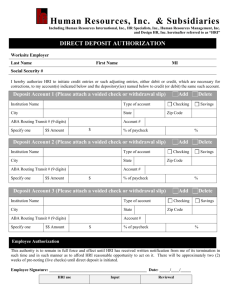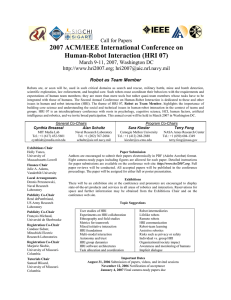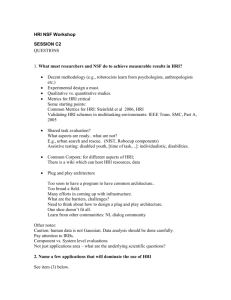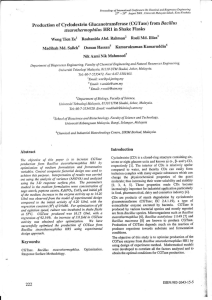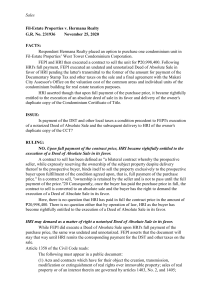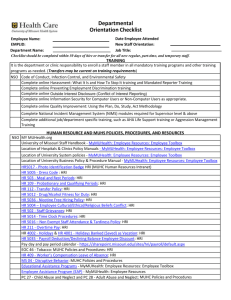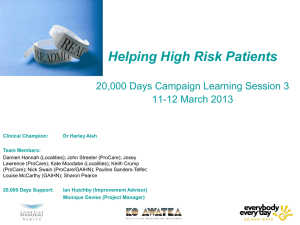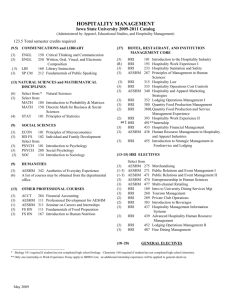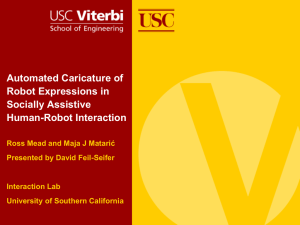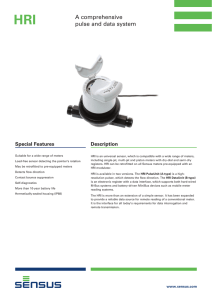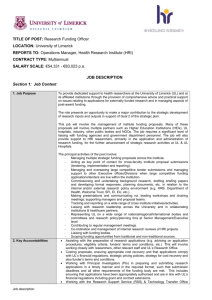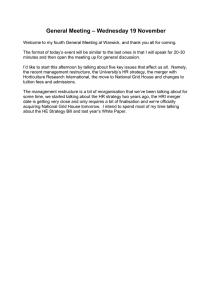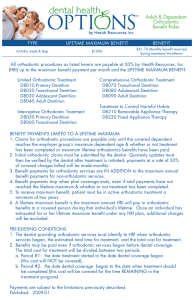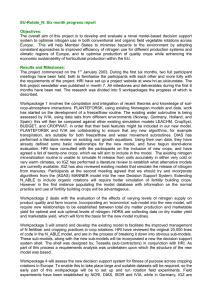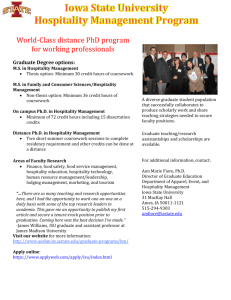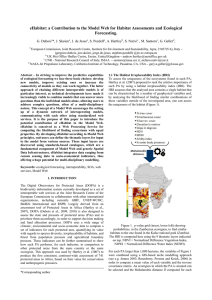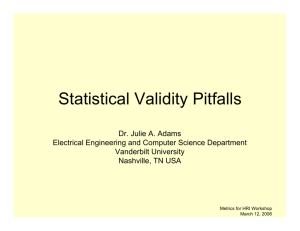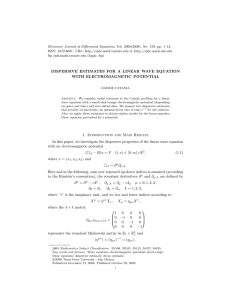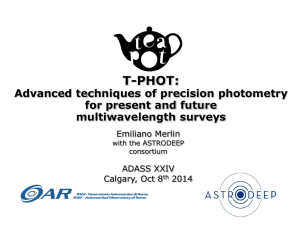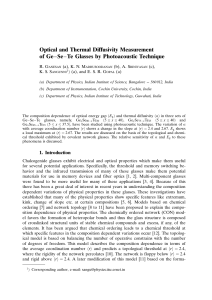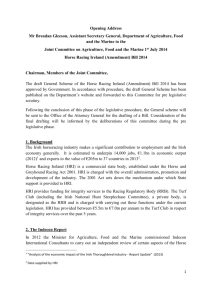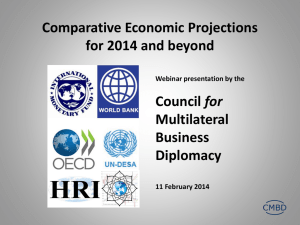Academic program assessment
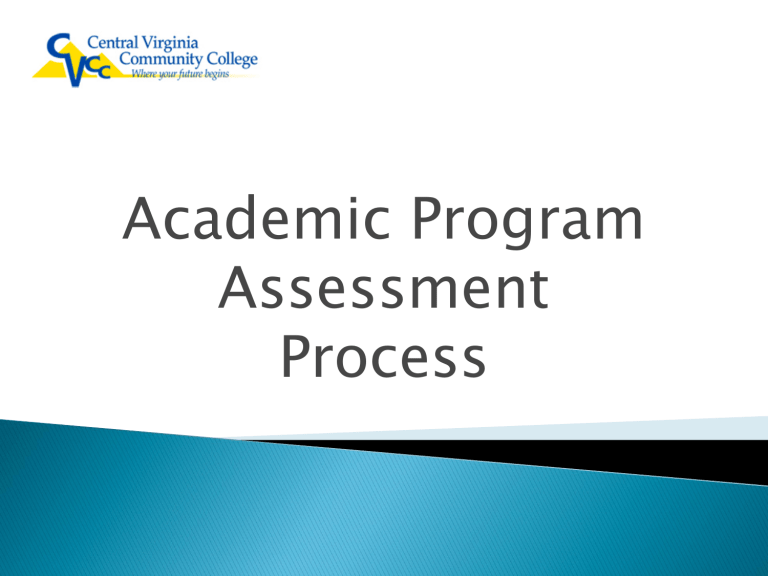
Academic Program
Assessment
Process
Academic program assessment is the systematic and ongoing method of gathering, analyzing, and using information from measured outcomes to improve student learning.
The primary purpose of academic assessment is to improve the quality of educational programs by improving student learning.
1.
Classroom assessment
2.
Course assessment
3.
Academic program assessment
4.
Institutional assessment
Something we have to do just for SACS
You have to be an research expert to do assessment
You can’t measure what students learn in certain types of programs
Assessment is someone else’s job
It will be used to judge faculty
The purpose is to prove your program is
100% successful
Assessment is a top down approach
Follow -up
Actions Based on Results
Program Goal
CVCC
Assessment
Cycle
Student
Learning
Outcomes
Curriculum
Map
Analysis of
Results
Measurement of Goals
Target Goals
General statements about what the program intends to accomplish
Describe the knowledge and skills of graduates, especially related to employment and transfer
Approaches to develop program goals
◦ Ideal graduate
◦ Review existing materials
◦ Course goals inventories
◦ Review other institution program goals
Specific statements that describe the required learning in order to attain the degree and meet the program goals.
Student Learning Outcomes differ in scope compared to Program Goals
VCCS General Education – Quantitative
Reasoning
◦ Students will be able to apply mathematical tools to the solution of complex problems.
The purpose of a curriculum map is to identify where in the curriculum the student learning outcomes are addressed
Classes at top and courses on the side
Provides information about the extent to which the curriculum really supports the student learning objectives
Can provide discussion about sequencing of courses, curriculum revisions, program planning, etc.
The Learning Outcomes and Curriculum Map
CULINARY ARTS CERTIFICATE
Total Semester Hours: 36
Date:___9/22/10_________
Student Outcome Goals
Demonstrate understanding of safe and effective kitchen use and maintenance.
Demonstrate expert-level operation of professional kitchen tools and equipment.
Demonstrate food preparation for the following cooking methods: sauté', broil, grill, braise, deep and shallow fry, and poach.
Describe and apply the principles of nutrition to maximize nutrient retention in food preparation.
Utilize concept of menu planning, cost control, purchasing, receiving, quality standards, profit and staffing costs.
X
Program Requirements
General Education
Requirements
HRI 119 HRI 128 HRI 140 HRI 158 HRI 218 HRI 219 HRI 220 HRI 228 BUS 117 ENG 111
SOC
SCIENCE
ELEC
BUS 226 or ITE
115
X
X
X
X
X
X
X
X
X
X
X
X
X
X
X
X
X
X X
Specific
Measurable
Attainable
Results-oriented
Time Specific
◦ Students graduating in Spring 2013 with an
Associate of Arts and Science Degree in General
Studies will score above the national norm of 112 on Math Scaled Score of the ETS Academic Profile.
Make sure it is useful and leads to improvements
Align the assessment method with the target goals
Consider where and when the assessment will occur (how to keep track of the students)
Are there existing assessments
Multiple measures
◦ Tests
◦ Work samples
◦ Interviews
◦ Demonstrations
◦ Rubrics
Compare actual student performance with intended student learning for each outcome
Keep it simple
Identify areas of strengths and weaknesses for the program
Discussion among faculty on how to improve program and student learning
Actions to improve student learning outcomes tied to strengths/weakness
◦ Reinforce, discontinue, add
Brainstorm
Collaborate (Include all facult)
Document
◦ Lesson plans
◦ Book changes
◦ New classroom assignments and activities
◦ Curriculum changes
Follow-up on actions taken the previous year
Narrative about how the action items were implemented
Documentation that they took place
Explain changes to data as a result of actions steps taken
Process Step
Program Goal
Student Learning
Outcomes
Curriculum Map
Target Goals
Measurement of Goals
Analysis of Results
Actions Based on Results
Follow-up on Action
Steps
Time frame
August 2012
August 2012
September 2012
November 2012
April 2013
Summer 2013
August 2013
April 2014
